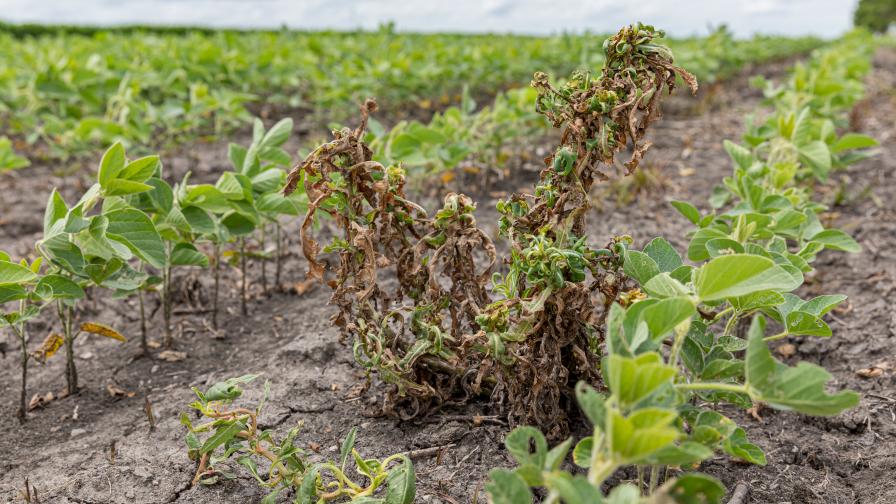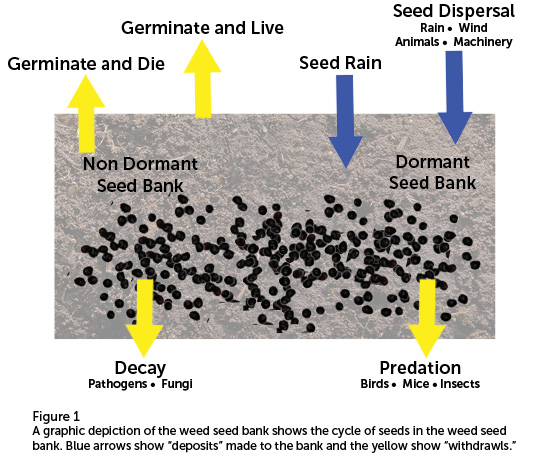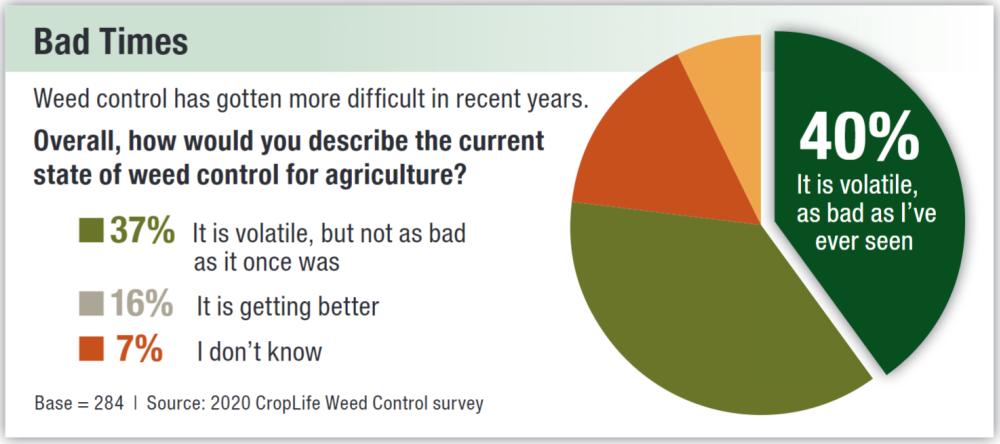The Challenges to Effective Weed Management

As agriculture looks to the 2021 growing season, controlling yield-robbing weeds has remained a key priority, especially with forces both in the field and from outside impacting the segment.
Controlling herbicide-resistant weeds was already a major challenge for ag retailers and their grower-customers. And this situation has been made more difficult because of a number of factors that impacted agriculture during 2020 — many of which will continue to plague the market during the upcoming growing season.
At last count, the number of herbicide-resistant weeds globally had skyrocketed past the 500 mark. Of these, there are varieties that have evolved resistance to 23 of the 26 known herbicide sites of action and 167 different herbicides overall.
To gauge just how difficult controlling weeds has become, CropLife® magazine sent out a brief survey to its readers in October. The results were eye-opening, to say the least.
When asked about the current state of weed control in agriculture, the majority of respondents (40%) indicated this was “very volatile, as bad as I’ve ever seen it.” Another 37% wrote that weed management was volatile, “but not as bad as it once was.” Only 16% of respondents believed weed control today was “better” than it had been during prior growing seasons. The remaining 7% weren’t entirely sure what the current state of herbicide-resistant weed control was in their areas of the country.
Of course, fighting the resistant plants within the crop fields has only been part of the battle for agriculture of late. For several years now, popular herbicides for controlling weeds such as glyphosate have been mired in lengthy court fights, potentially impacting their continued use as management tools. During 2020, this came to a head of sorts for one herbicide, as the Ninth Circuit of Appeals vacated the 2018 registration of dicamba for use. A subsequent ruling from the EPA allowed users to apply dicamba through the end of July, however.
More Days in Court
According to the survey, agriculture expects more such court battles to take place in the months and years ahead. Slightly more than half (51%) say that court battles over crop protection products will increase in frequency during 2021 and beyond, with another 36% believing the current high level of legal activity will remain constant for the foreseeable future. Only 2% think that courtroom attacks on crop protection products will decrease.
Furthermore, these constant courtroom battles may have already tampered the future growth ability for dicamba. According to the survey, one-quarter (25%) of respondents say sales of the herbicide in 2021 will be flat, with another 17% believing declining sales are in dicamba’s future. The majority, 36%, think that growers will keep using dicamba in the 2021 growing season, “but begin looking for alternatives to it.” Only 22% of respondents believe dicamba will keep growing sales/market share going forward.
Weed Control Changes Ahead
Naturally, weed control management will begin to alter somewhat because of all these challenges. For one thing, with all the legal issues impacting post-emerge products, observers see bigger market opportunities for pre-emerge products. In fact, according to the survey, 68% of respondents predict pre-emerge product use will become more widespread than it is today, with another 22% saying usage in this sector will increase “a little more” during upcoming growing seasons.

Derrick LeBeau, Syngenta.
“Pre-emerge products will be extremely important for 2021,” says Derrick LeBeau, an Agronomic Services Representative for Syngenta. “They will offer growers an effective way to get their fields clean and combat hard-to-control weeds on the front end.”
Beyond this, survey respondents predict that weed control management will continue to develop strategies to fight herbicide-resistant weeds. One recent trend respondents think will dominate weed control management in the 2021 growing season is one that has already shown some recent popularity — “cocktail mixes” of different active ingredients that operate with different modes of action. According to the survey, 60% of respondents think these “blended products” will become the norm moving forward.
This month, another example of this kind of herbicide was introduced by Corteva Agriscience. Called Kyber, it’s a pre-emerge product featuring a blend of three active ingredients — metribuzin, flumioxazin, and pyroxasulfone.
As for the rest of the ways weed control management might change in the years ahead, 14% of respondents believe ag retailers and their grower-customers will begin looking at using biological products to battle herbicide-resistant weeds. Another 22% think the effort to bring new active ingredients to the agricultural market will accelerate from its current pace (more than one decade from lab to field). The remaining 4% foresee “no changes” to weed control.







